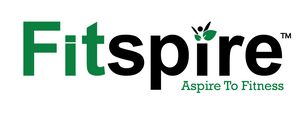Do you desire to feel better, look better, and live a longer, healthier life? You won't fail if you work on your flexibility and strength. Training in flexibility and strength helps the body do daily tasks more easily. It preserves your muscle and bones mass, helps you lose weight permanently, lowers your chance of injury, gives you more energy, and lifts your spirits. Your coordination, balance, and posture will improve, you'll experience less joint discomfort, be less likely to fall, and you'll be less likely to develop diseases including type 2 diabetes, cardiovascular disease, kidney disease, and arthritis.
How can you add strength and flexibility to your routine?
There are several ways to incorporate flexibility and strength exercise into your regimen. You can get started without spending a lot of money on expensive weights or signing up for a gym membership. In fact, you can simply be on track to obtaining your target level of agility and strength by simply squat on a chair at home, performing planks, push-ups, trying to stretch, climbing stairs, or other actions that need you to rotate your joints and utilise your own body mass as resistance.
The best way to exercise your joints and muscles is to use your regular activities as a starting point. To strengthen the muscles in your arm, for instance, you could decide to lift the milk carton several times before placing it back in the fridge. When possible, use the steps to build up the muscles in your legs, hips, buttocks, and abdomen.
It's quite easy to do; just adhere to the overload principle in any activity you choose. That is, your muscular and joints must be stretched and pressured with a load heavier than usual in order to build strength and flexibility. The additional load would stimulate the joints and the muscles to adjust. The tendons or muscle fibres that connect the stretched muscle to the bone lengthen. Additionally, when you practise strength and flexibility, the length of these fibres will affect how much the muscle can grow.
What are strength exercises?
Any workout that requires more effort from your muscles than normal is a strength exercise. You'll have stronger, bigger, more powerful, and longer-lasting muscles as a result. The exercises need you to lift something with your body weight or push against a resistance.
A weekly muscle-strengthening exercise routine should include two sessions.
The following are some examples of muscle-building exercises:
- lifting weights
- working with resistance bands
- heavy gardening, such as digging and shovelling
- climbing stairs
- hill walking
- cycling
- dance
- push-ups, sit-ups and squats
- yoga
What are flexibility exercises?
Exercises that promote flexibility help joints maintain the range of motion needed for daily tasks and physical activity.
Activities that promote flexibility include:
- stretching
- yoga
- tai chi
- pilates
How do strength and flexibility exercises benefit your body?
Exercises that build muscle assist maintain functional capacity and reduce the pace of bone and muscle loss that comes with ageing.
Fall prevention can also be achieved through these activities.
Your ability to stand more erect, experience less pain and suffering, and reduce your risk of injury can all be improved, according to medical professionals, by increasing your flexibility.
Being flexible will also make it easier for you to continue performing daily duties.


